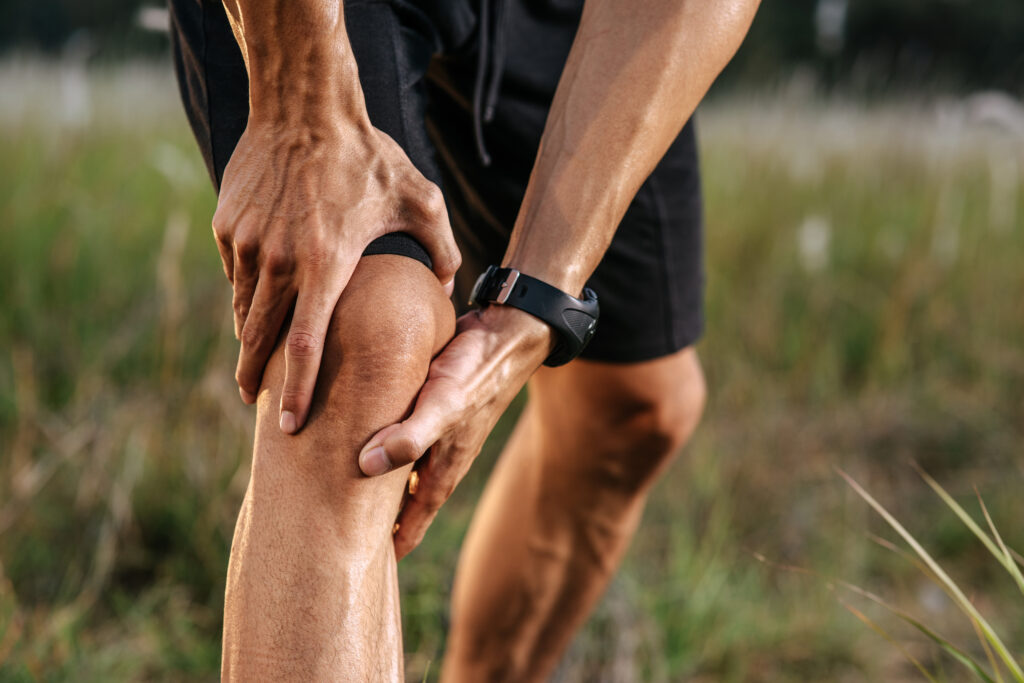When you face a sports injury, knowing where to turn in Lexington can make all the difference in your recovery process. You've got access to various trusted solutions, from specialized physical therapy to innovative treatments that can speed up healing. Local clinics not only offer these services, but they also emphasize the importance of nutrition and community support. However, understanding how to combine these elements effectively can be a challenge. What if there are key strategies you might be missing that could enhance your recovery even further?
Understanding Sports Injuries
When it comes to sports injuries, many people underestimate their complexity and impact. You might think a sprain or strain is just a minor inconvenience, but the reality is far more nuanced. Each injury can vary in severity, from mild to severe, and understanding these distinctions is vital for effective treatment and recovery.
Sports injuries often involve not only muscles and ligaments but also tendons, joints, and even bones. It's important to recognize that the body is a complex system, and an injury in one area can lead to compensatory issues elsewhere. For instance, if you sprain your ankle, you might adjust your gait to avoid pain, which can put additional stress on your knee or hip.
Moreover, the psychological aspect of injuries can't be ignored. You may experience frustration, anxiety, or even fear of re-injury, which can affect your approach to healing and returning to your sport. Being aware of these emotional factors is just as important as addressing the physical symptoms.
Lastly, everyone's body responds differently to injuries, meaning recovery times and approaches can vary widely. Factors like age, overall health, and even previous injuries play significant roles in how quickly you heal.
Importance of Timely Recovery
Timely recovery from sports injuries is essential for getting you back to your game and preventing further complications. When you sustain an injury, your body needs adequate time to heal properly. Delaying recovery can lead to chronic pain, re-injury, or even long-term damage that could sideline you for a season or longer. By addressing injuries promptly, you can minimize the risk of these adverse effects.
You must understand that recovery isn't just about resting; it's about following the right protocols. Ignoring symptoms or pushing through pain may seem like a way to stay in the game, but this can actually worsen your condition. Instead, you should prioritize your health and give your body the chance to heal correctly.
Engaging in timely recovery also helps maintain your physical fitness. When you take the proper steps right after an injury, like seeking medical advice and adhering to recovery plans, you can preserve your strength and mobility. This proactive approach can greatly reduce downtime and allow you to return to your sport at a competitive level.
Additionally, a quick recovery can restore your confidence. Knowing you've addressed your injury properly can alleviate fears of re-injury, allowing you to focus on your performance rather than your limitations.
Ultimately, timely recovery is about more than just healing; it's about ensuring you're at your best when it matters most. So, take your recovery seriously and get back in the game stronger than ever.
Physical Therapy Options
After addressing your injury promptly, exploring physical therapy options can considerably enhance your recovery process. Physical therapy plays an essential role in restoring strength, flexibility, and functionality after an injury. You'll find various therapy options tailored to your specific needs and goals.
One effective approach is manual therapy, where a trained therapist uses their hands to manipulate your muscles and joints. This technique helps reduce pain and improve mobility.
If you're dealing with muscle weakness or stiffness, therapeutic exercises can be beneficial. These exercises focus on strengthening the affected area and enhancing overall physical conditioning.
Aquatic therapy is another great option, especially if you're looking for a low-impact environment. Exercising in water reduces stress on your joints, allowing you to regain strength and flexibility without causing further injury.
Additionally, many clinics in Lexington offer specialized programs for athletes, concentrating on sport-specific rehabilitation techniques.
Another vital aspect of your recovery is education. Your therapist will guide you on proper body mechanics and injury prevention strategies, empowering you to return to your sport safely.
They'll also provide you with a home exercise program to continue your progress outside of therapy sessions.
Finally, don't overlook the importance of regular communication with your therapist. They can adjust your treatment plan as needed, ensuring you're on track for a successful recovery.
Innovative Treatment Techniques
Many athletes are turning to innovative treatment techniques to enhance their recovery and performance. These methods not only speed up healing but also help prevent future injuries, allowing you to get back to your game stronger than ever.
One popular technique is the use of cryotherapy, which involves exposing your body to extremely cold temperatures for a short period. This process reduces inflammation and accelerates recovery by improving blood flow once you warm up again.
If you're looking for something less intense, consider infrared therapy. It uses light to penetrate deep into your tissues, promoting healing on a cellular level.
Another cutting-edge option is stem cell therapy. This technique harnesses your body's natural healing capabilities by injecting stem cells into injured areas, helping to regenerate damaged tissues. While it might sound intimidating, many athletes have found significant improvements in their recovery times and overall performance.
You might also explore the benefits of platelet-rich plasma (PRP) therapy. This involves taking a small sample of your blood, processing it to concentrate the platelets, and injecting it into the injured area. The growth factors in PRP kickstart the healing process, making it a game-changer for tendon and ligament injuries.
Lastly, consider incorporating wearable technology that can monitor your movements and biomechanics. These devices provide real-time feedback, helping you adjust your techniques and avoid further injury.
Nutrition and Recovery
Recovering from a sports injury isn't just about the treatments you choose; what you eat plays a vital role in your healing process. Nutrition can greatly impact your recovery time and overall well-being. Fueling your body with the right nutrients helps repair damaged tissues, reduces inflammation, and restores your energy levels.
Here are some key nutritional elements you should focus on:
- Protein: Essential for muscle repair and growth. Incorporate lean meats, fish, dairy, or plant-based sources like beans and lentils.
- Omega-3 Fatty Acids: Found in fish like salmon or flaxseeds, these can help reduce inflammation and promote healing.
- Vitamins and Minerals: Nutrients like Vitamin C and zinc are vital for tissue repair. Citrus fruits, nuts, and leafy greens are excellent sources.
- Hydration: Staying hydrated is critical. Water aids in nutrient transport and can help manage inflammation.
Don't underestimate the power of a balanced diet. Eating a variety of whole foods will provide your body with the necessary tools to recover efficiently.
Consider consulting a nutritionist who specializes in sports recovery to tailor a meal plan that fits your needs.
Local Support Groups
Finding a supportive community can make a significant difference in your recovery journey from a sports injury. Local support groups in Lexington offer a welcoming space where you can connect with others who've faced similar challenges. Sharing experiences can help you feel less isolated, and you might even pick up some valuable insights on coping strategies.
In these groups, you'll find not just fellow athletes but also caregivers, coaches, and medical professionals who understand the complexities of sports injuries. They can provide emotional support, encouragement, and practical advice tailored to your specific situation. This sense of camaraderie can be essential, especially when you're feeling frustrated or discouraged during your recovery.
Many local groups host regular meetings, workshops, or social events, allowing you the chance to build relationships and foster connections. By attending these gatherings, you can learn from others' experiences, share your own story, and celebrate each other's progress.
Some groups also offer resources like guest speakers, physical therapy sessions, and educational materials that can further assist your recovery.
If you're unsure where to start, consider reaching out to local sports clinics, rehabilitation centers, or community centers. They often have information on upcoming support group meetings or can help you find the right fit for your needs.
Preventative Measures for Athletes
To stay injury-free, you need to adopt effective preventative measures.
This includes mastering proper warm-up techniques, incorporating strength training into your routine, and maintaining flexible conditioning practices.
Proper Warm-Up Techniques
A dynamic warm-up routine is essential for athletes looking to prevent sports injuries. Focusing on mobility and flexibility, this type of warm-up prepares your body for the demands of your sport. By incorporating specific movements, you can enhance your performance and reduce the risk of injury.
Here are key components to include in your warm-up:
- Leg swings: Improve hip mobility and activate lower body muscles.
- Arm circles: Increase shoulder flexibility and prepare upper body for action.
- High knees: Elevate heart rate while engaging your core and leg muscles.
- Walking lunges: Stretch and strengthen your legs, hips, and glutes.
When you prioritize a proper warm-up, you're not only readying your body for the game ahead but also setting the stage for long-term athletic success.
Aim for a routine that lasts about 10-15 minutes, focusing on movements that mimic the actions of your sport. This preparation can greatly lower your chances of strains and sprains.
Strength Training Importance
Strength training is an important component of any athlete's regimen, serving as a powerful preventative measure against injuries. By incorporating strength training into your routine, you can enhance muscle stability, joint strength, and overall performance. It helps you build the resilience needed to withstand the physical demands of your sport, reducing the risk of common injuries.
When you focus on strength training, you're not just building muscle; you're also improving your balance and coordination. These factors play a significant role in preventing falls and awkward movements that often lead to injury. Additionally, stronger muscles can better support your joints, which is essential in high-impact sports.
You should prioritize exercises that target your core, legs, and upper body, as these areas are important for athletic performance. Whether you're lifting weights, using resistance bands, or performing bodyweight exercises, consistency is key. Aim to integrate strength workouts into your weekly schedule, and don't forget to allow for recovery.
Ultimately, by committing to a solid strength training program, you're investing in your long-term health and athletic success. Strength training isn't just about performance; it's about staying injury-free and thriving in your sport.
Flexible Conditioning Routines
Incorporating flexible conditioning routines into your training program complements the benefits of strength training by enhancing your agility, endurance, and overall athletic performance.
These routines allow you to adapt your workouts based on daily conditions, helping you stay engaged and prevent injury.
Consider the following benefits of flexible conditioning:
- Injury Prevention: Tailoring your workouts can reduce the risk of overuse injuries.
- Improved Recovery: Adjusting intensity helps your body recover more efficiently between sessions.
- Enhanced Focus: Switching up routines keeps your mind engaged, making training feel less monotonous.
- Versatile Skill Development: You can target specific skills needed for your sport on any given day.
Conclusion
In Lexington, you have access to trusted solutions for sports injury recovery that can get you back on track. By exploring physical therapy options, innovative treatments, and focusing on nutrition, you'll enhance your recovery process. Joining local support groups can provide motivation and share valuable strategies with fellow athletes. Remember, prioritizing preventative measures can help you avoid future injuries. Embrace these resources, and you'll be well on your way to achieving peak performance again.



